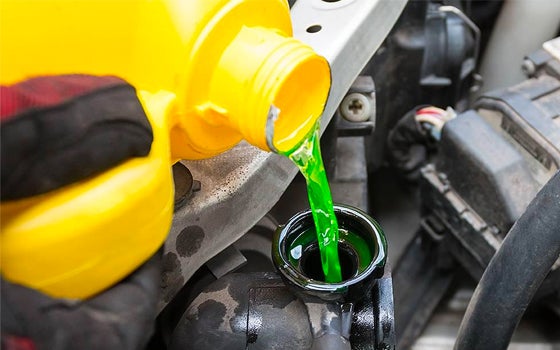People often overlook scheduling a coolant flush for their vehicle, but it is actually very important. We’ve answered the most common questions about BMW coolant flush, keep reading for more!

A coolant flush (also known as a radiator flush) is a process that drains the old coolant out of the coolant system and forces a mixture of cleaner, water, and new coolant through the system. This removes any dirt, sludge, rust, or sediment. A full flush (vs. just draining the radiator) is important to make sure all of the old stuff in your entire system is removed. New coolant and conditioner are then added to the cooling system.
Coolant (also known as radiator fluid or antifreeze) works to keep your radiator at a proper temperature. Because vehicle engines run hot, and even hotter in warm weather, they need something to help control the temperature and prevent overheating. When an engine overheats it can cause a lot of damage, especially over time. Individual parts can fail due to overheating and cause massive problems as a result. The coolant doesn’t just stay in the radiator, it runs through hoses, the water pump, and cooling passages in the engine.

A coolant flush removes build-up contaminants that accumulate over time. Without regular coolant flushes, your dirty coolant can cause corrosion, create rust, and other debris that will hinder your cooling system from functioning properly.
Don’t Wait! Save money by maintaining your vehicle.
#1 Mechanic In Arkansas
Or Call: 501-214-1091
Coolant flushes are necessary because the liquid in your system loses its ability to keep your vehicle’s engine at the right temperature. With that said, it does not need to be changed as often as your oil does. For older vehicles, we recommend flushing the system every two years (or 30,000 miles). New vehicles may have extended-life coolant which can last longer. You can find the recommendation for your specific vehicle in your owners manual, or call us and we will let you know!
Or Call: 501-214-1091